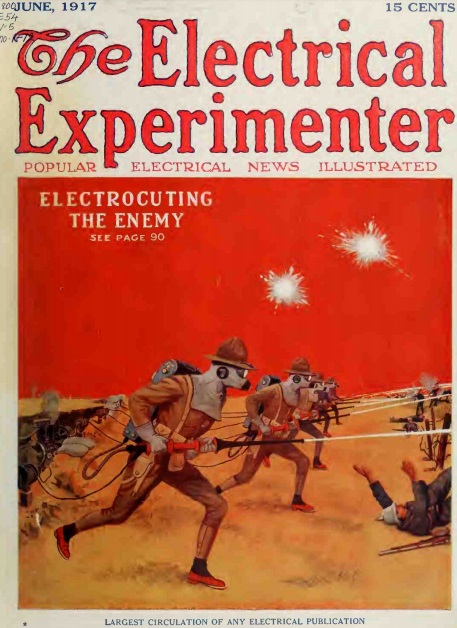A hundred years ago this month, the cover of the June 1917 issue of Electrical Experimenter shows Hugo Gernsback‘s idea for “shooting with electricity.” In response to the German flamethrower (flammen werfer, or “liquid water”), Gernsback proposed a system inspired by a hapless firefighter who sprayed water on the third rail of an electric train. That fireman was knocked out, but not injured fatally, by the resulting shock, but Gernsback suggested that the same thing could be done in reverse. And if a more conductive fluid were used, then the results would be more lethal.
Gernsback proposed a solution of diluted sufluric acid (or chlorid of zinc or even ordinary salt water) in a tank on a soldier’s back. Another chemical is added to increase the pressure, resulting in enough pressure for a stream to reach the enemy line. The system is completed with a 10 HP gas engine driving an AC generator, whose voltage is stepped up to 10,000-15,000 volts. One side is hooked to the stream of liquid, and the other to ground (apparently through spikes on the soldier’s boots). The stream is directed at the enemy soldier. Assuming he is in contact with ground, “the enemy will almost certainly be rendered unconscious.”
As to the friendly soldier, Gernsback points out that “it is self-evident that his equipment must be such that he himself will not be electrocuted.” He suggests that this problem is easily solved by the simple expedient of his wearing a “special ‘high-tension’ rubber shoe, capable of withstanding 20,000 volts,” along with rubber gloves.

